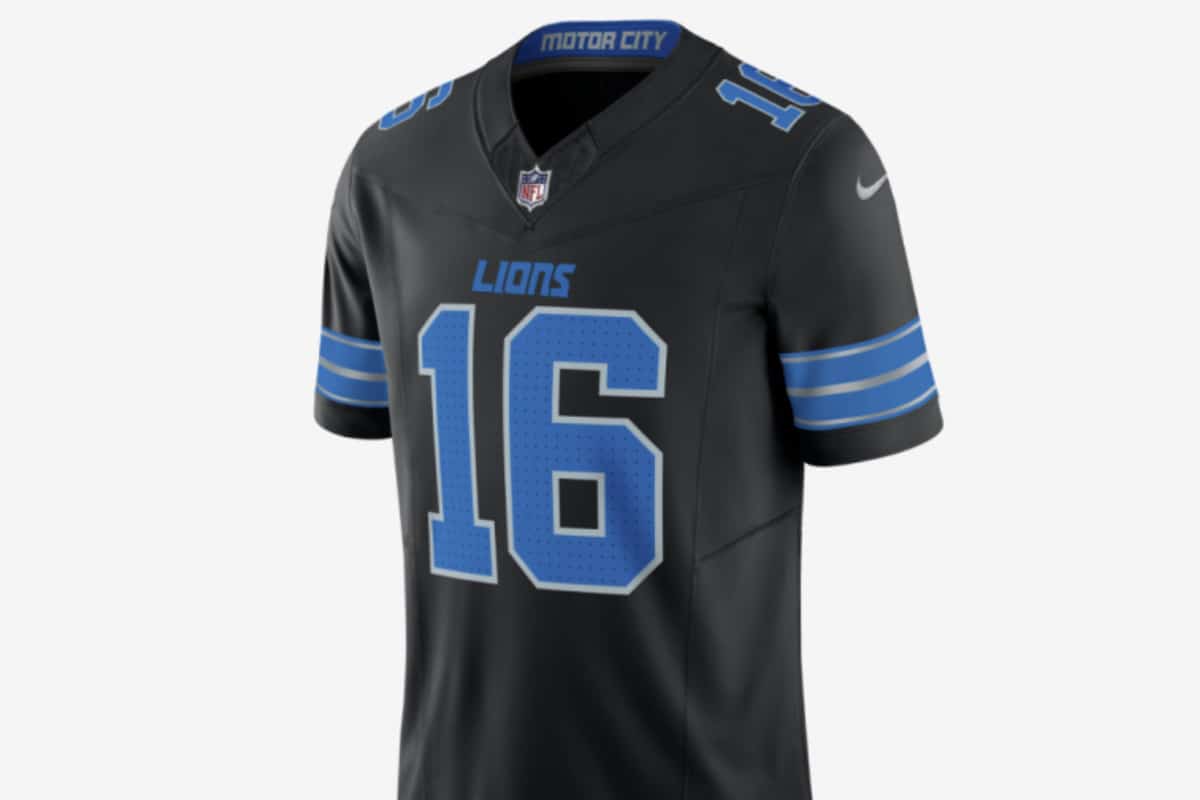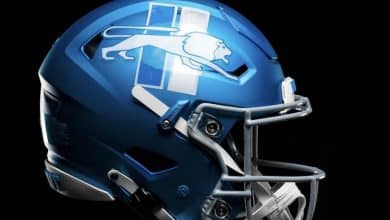
As you know, the DNA of Sports fantasy football leagues are back! First of all, a big thank you for your trust since there will be more than 400 players competing on Sleeper for this first season.
But we couldn't embark on this adventure without a global overview of the major concepts of Fantasy NFL to give the most novices all the keys to having fun this year.
1. Draft Preparation
A. Do your research
The draft is the most crucial step of your fantasy football season. This is where you build the foundation of your team.
– Study player rankings (ADP – Average Draft Position): ADP gives you an idea of where players are typically selected in drafts. Use this information to assess the value of players and identify players who could be steals in later rounds. On Sleeper, players are ranked by ADP by default, so you will always know who is the statistically most likely player to be selected when you need to make your decision.
– Understand your league’s rules and format: While our leagues are very standard on the points scale, it is essential to go and consult it. Present on your league’s homepage, it will be of great importance when deciding your draft strategy.
B. Create a draft strategy
A well thought out draft strategy is essential to avoid unpleasant surprises.
– Prioritize key positions: Traditionally, running backs (RBs) and wide receivers (WRs) are the pillars of your fantasy team. These positions are the most variable and can have the greatest impact on your team. In the early rounds, target elite RBs and WRs to ensure a solid foundation. Increasingly, quarterbacks (QBs) who can run and score touchdowns themselves, like Lamar Jackson, Josh Allen or Jalen Hurts are highly prized and can be part of the foundation of your team.
– Flexibility and adaptation: Be ready to adjust your strategy based on other managers’ choices. If the RBs you are targeting are taken quickly, don’t insist on choosing one too early, but turn to a quality WR or TE.
C. Management of Bye Weeks during the Draft
Bye weeks are weeks when certain NFL teams do not play. It is important to take them into account during the draft to avoid having several key players unavailable in the same week.
– Plan Ahead: Pay attention to a player’s bye week before drafting him. Avoid drafting multiple starters with the same bye week, as this could weaken your team for that week. This information is always very visible by a number next to the player’s team name.
– Don’t panic: While bye weeks are important, don’t sacrifice the quality of your draft just to avoid them. Proper roster management during the season can make up for a tough week due to bye weeks.
D. What to do:
– Keep an eye on the news: During the preseason and the weeks leading up to the draft, some players have been injured or have uncertain status due to difficult contract renegotiations (hello Brandon Aiyuk, Ja'Marr Chase or CeeDee Lamb). In the early rounds, make sure to select players who are healthy and ready to perform
– Look at team situations: Some teams have more dynamic offenses or use certain players more frequently in the red zone, which can increase their chances of scoring. Others operate in RB committees which divides the points among several players and makes them less interesting individually early in the draft (typically the Jaylen Warren-Najee Harris duo on the Steelers).
– Don’t pick too many players from the same team: On the one hand, during the bye week of the team in question, this will greatly reduce your replacement options. Also, having two star players from the same team (Christian McCaffrey and Deebo Samuel from the 49ers for example) presents a risk of not seeing both players perform at full capacity at the same time.
2. Staff management during the season
Managing your roster throughout the season is crucial to keeping your team competitive and maximizing your chances of success.
A. Weekly performance monitoring
Each week, evaluate your players' performance to identify those who are in good shape and those who may need to be replaced.
– Analyze stats: Don’t just look at points scored. Analyze snaps played, receiver targets, and red zone opportunities. These details will help you predict future performance.
– Matchups and Lineups: Check the matchups each week to determine which players have the best chance of success. A second-tier WR facing a weak pass defense may be a better option than a star WR facing a top-tier defense.
– Consider team tendencies: Teams can change their offensive strategy throughout the season depending on opponents and circumstances. Follow these trends to adjust your lineup accordingly.
B. Injury and bye week management
Absences (injuries and bye weeks) are an inevitable part of the NFL, and knowing how to handle them is crucial.
– Stay informed: Use alerts and follow injury updates to be among the first to know if one of your players is injured. This will allow you to make the necessary adjustments, whether via the waiver wire or by changing your lineup. And for that, you are already in the best possible place with www.tdactu.com!
– Prepare in advance: Depending on your players’ bye weeks, start planning potential replacements several weeks in advance. This will save you from having to find a solution in an emergency.
3. Waiver management
A. What is the Waiver Wire?
The waiver pool is a vital part of managing your team after the draft. It is the pool of players who were not selected during the draft. Each week, you can claim undrafted players in hopes of improving your team.
The waiver works on a priority basis based on league standings. The last one has priority number 1, the second to last has priority number 2 and so on. At any time, anyone can try to sign the player they want. If a player is claimed by several people, the priority rule will decide who actually gets the player. The decision will be made the following Wednesday and the player joins his new team immediately.
B. How to use the Waiver
– Track Performance and Opportunities: Every week, some players can emerge and perform immensely due to injuries to other players, changes in the game plan, or unexpected opportunities. Pay attention to these changes and react quickly.
– Plan ahead: Don’t make your waiver choices at the last minute. Think about your team’s potential needs several weeks in advance, taking into account upcoming matchups and bye weeks.
– Analyze upcoming matchups: A waiver player with a good matchup against a weak defense can be a great temporary option for your team.
– Don’t overload your team with waiver players: Rushing to sign every player who had a good week can lead to an overloaded and unbalanced team. Focus on additions that fill a specific need.
4. Trade Management
Trades are a dynamic part of NFL fantasy, allowing managers to strengthen their teams or address gaps. Trades can be a great way to improve a struggling team, gain more depth, or get rid of underperforming or injured players.
– Know the value of players: Use rankings and projections to assess the relative value of players. Propose balanced trades that benefit both teams. Several tools exist such as the ProFootballNetwork site to analyze and calculate the relevance of a trade.
– Be opportunistic: Take advantage of other managers’ needs. If another manager has multiple injured players at a position, propose a trade to fill that void.
– Communicate clearly and respectfully: When an exchange proposal is made, a chat session will open with your potential partner. This is the time to open negotiations to find common ground, with respect of course.
– Don’t make unreasonable trades: Offering a low-value player for a star player is a quick way to get passed over by other managers.
5. In brief
– Keep up with news and injuries: To maximize your chances of success, it’s crucial to stay informed about the latest NFL news. Injuries, suspensions, and even changes in the weather can affect player performance.
– Information sources: Use reliable sites, listen to podcasts, and follow sports journalists’ Twitter accounts to stay up to date.
– Balancing risks and managing your bench: A well-balanced team has players capable of performing every week, but also a solid bench to deal with the unexpected.
– Choose your starters and substitutes wisely: Each week, evaluate matchups and recent performances to make the best lineup decisions.
– Stay on top of the waiver: There will be opportunities every week to add quality to your roster. It’s not uncommon for a player you didn’t originally draft to become one of the key men on the path to the title.
You now have all the keys to dominate your league and shine on the battlefield that is the Fantasy NFL: a strategic draft, clever management of bye weeks, constant vigilance on the waiver, and skillful trades. And may the best win.












